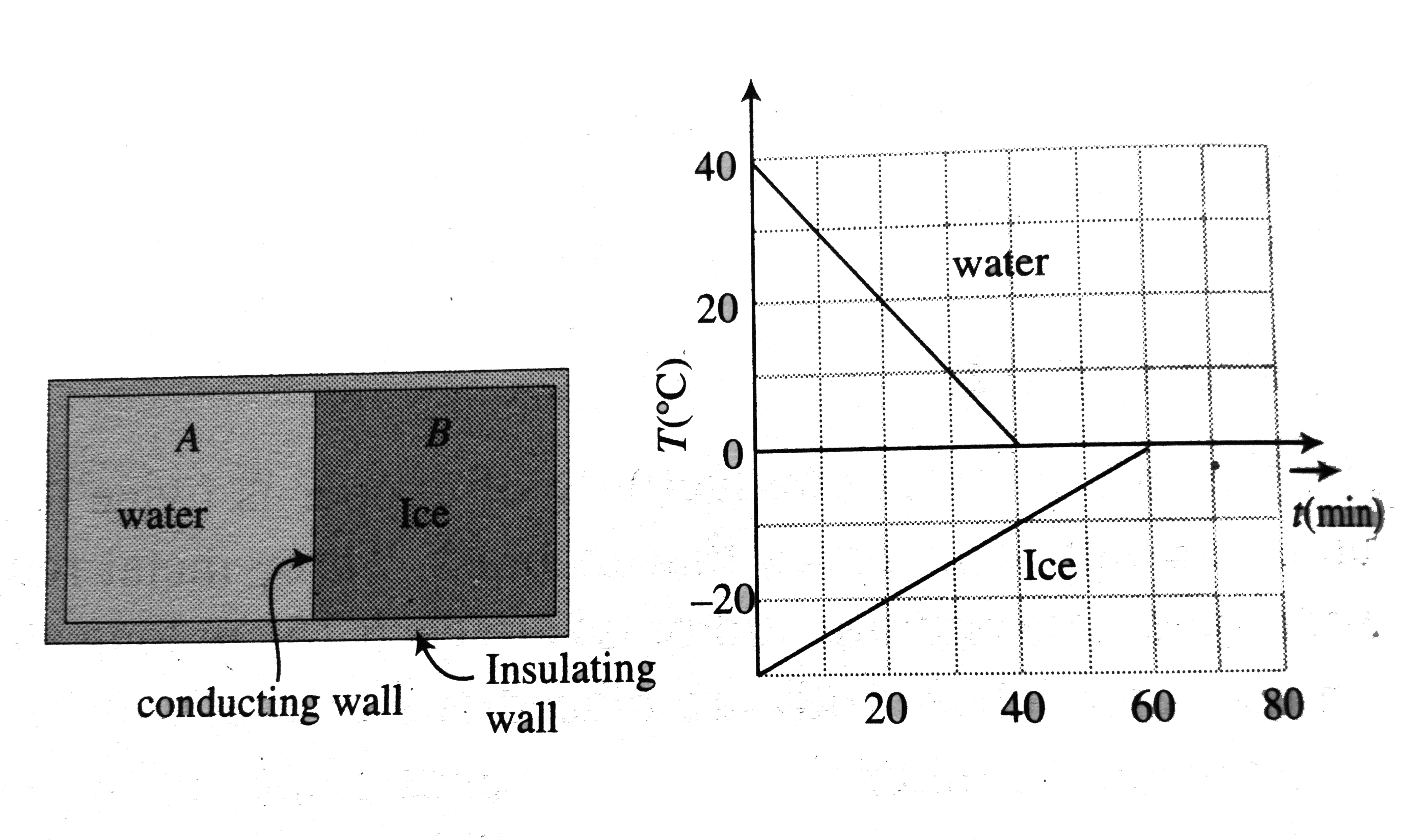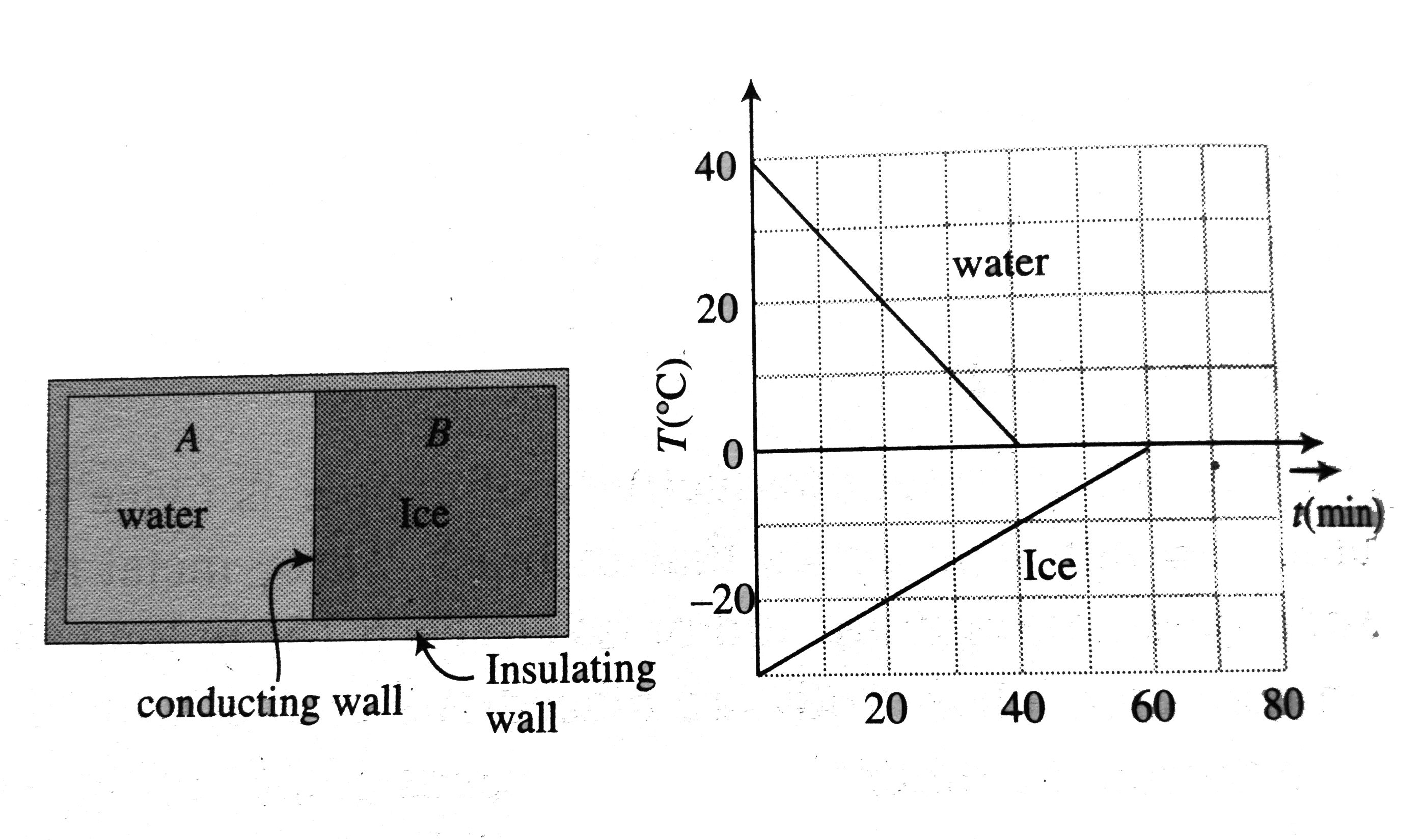In a laboratory, liquid in a thermally insulated container is stirred for one, hr, by a mechanical linkage to a in surrounding, for this process:
W<0,q=0
W<0,q>0
W<0,q>0
W>0,q=0
The correct Answer is:D
To solve the problem, we need to analyze the situation described in the question. We have a liquid in a thermally insulated container that is being stirred for one hour. Let's break down the components of this scenario step by step.
1. Understanding the System:
- We have a liquid in a thermally insulated container. This means that no heat can enter or leave the system (the container) during the stirring process.
2. Identifying Heat Transfer (q):
- Since the container is thermally insulated, there is no heat transfer between the system and the surroundings. Therefore, we can conclude that:
q=0
3. Identifying Work Done (W):
- Stirring the liquid involves applying a force to move the liquid, which constitutes work done on the system. Since work is being done to stir the liquid, this work is positive. Therefore, we can conclude that:
W>0
4. Combining the Results:
- From our analysis, we have determined that:
- Work done on the system (W) is greater than zero.
- Heat transfer (q) is equal to zero.
5. Choosing the Correct Option:
- Now, we can look at the options provided in the question:
- Option A: Work < 0, q = 0
- Option B: Work < 0, q > 0
- Option C: Work < 0, q > 0
- Option D: Work > 0, q = 0
- The only option that matches our findings (W > 0 and q = 0) is:
Option D: Work > 0, q = 0
Final Answer:
The correct answer is Option D: Work > 0, q = 0.
---
- We have a liquid in a thermally insulated container. This means that no heat can enter or leave the system (the container) during the stirring process.
- Since the container is thermally insulated, there is no heat transfer between the system and the surroundings. Therefore, we can conclude that:
q=0
- Stirring the liquid involves applying a force to move the liquid, which constitutes work done on the system. Since work is being done to stir the liquid, this work is positive. Therefore, we can conclude that:
W>0
- From our analysis, we have determined that:
- Work done on the system (W) is greater than zero.
- Heat transfer (q) is equal to zero.
- Now, we can look at the options provided in the question:
- Option A: Work < 0, q = 0
- Option B: Work < 0, q > 0
- Option C: Work < 0, q > 0
- Option D: Work > 0, q = 0
- The only option that matches our findings (W > 0 and q = 0) is:
Option D: Work > 0, q = 0
The correct answer is Option D: Work > 0, q = 0.
Topper's Solved these Questions
- THERMODYNAMICSBOOK - RESONANCE ENGLISHCHAPTER - THERMODYNAMICSEXERCISE - Exercise -2 Part-I: Only one option correct type
23 Videos
- THERMODYNAMICSBOOK - RESONANCE ENGLISHCHAPTER - THERMODYNAMICSEXERCISE - Exercise-2 II: Single and double value integer type
16 Videos
- THERMODYNAMICSBOOK - RESONANCE ENGLISHCHAPTER - THERMODYNAMICSEXERCISE - H-1
1 Videos
- TEST SERIESBOOK - RESONANCE ENGLISHCHAPTER - TEST SERIESEXERCISE - CHEMISTRY
50 Videos
Similar Questions
A sample of liquid in a thermally insulated constant ( a calorimetre ) is stirred for 2 hr. by a mechanical linkage to motor in the surrounding ,for this process :
View SolutionA liquid is stirred in thermally insulated container , for about 2 hrs. Which of the following si correct ?
View SolutionAn ideal gas is enclosed in a thermally insulated container. Container is covered by an insulating piston which is connected with spring. Small displacement is given to piston as shown in figure. Which of the following statements is correct? Neglect friction everywhere.

View Solution
A 0.60 kg sample of water and a sample of ice are placed in two compartmetnts A and B separated by a conducting wall, in a thermally insulated container. The rate of heat transfer from the water to the ice through the conducting wall is constant P, until thermal equilibrium is reached. The temperature T of the liquid water and the ice are given in graph as functions of time t. Temperature of the compartments remain homogeneous during whole heat transfer process. Given specific heat of ice =2100J/kg−K, specific heat of water =4200J/kg−K, and latent heat of fusion of ice =3.3×105J/kg.
Initial mass of the ice in the container equal to
View Solution
A 0.60 kg sample of water and a sample of ice are placed in two compartmetnts A and B separated by a conducting wall, in a thermally insulated container. The rate of heat transfer from the water to the ice through the conducting wall is constant P, until thermal equilibrium is reached. The temperature T of the liquid water and the ice are given in graph as functions of time t. Temperature of the compartments remain homogeneous during whole heat transfer process. Given specific heat of ice =2100J/kg−K, specific heat of water =4200J/kg−K, and latent heat of fusion of ice =3.3×105J/kg.
Initial mass of the ice in the container equal to
View Solution
A 0.60 kg sample of water and a sample of ice are placed in two compartmetnts A and B separated by a conducting wall, in a thermally insulated container. The rate of heat transfer from the water to the ice through the conducting wall is constant P, until thermal equilibrium is reached. The temperature T of the liquid water and the ice are given in graph as functions of time t. Temperature of the compartments remain homogeneous during whole heat transfer process. Given specific heat of ice =2100J/kg−K, specific heat of water =4200J/kg−K, and latent heat of fusion of ice =3.3×105J/kg.
The value of rate P is?
View Solution
A 0.60 kg sample of water and a sample of ice are placed in two compartmetnts A and B separated by a conducting wall, in a thermally insulated container. The rate of heat transfer from the water to the ice through the conducting wall is constant P, until thermal equilibrium is reached. The temperature T of the liquid water and the ice are given in graph as functions of time t. Temperature of the compartments remain homogeneous during whole heat transfer process. Given specific heat of ice =2100J/kg−K, specific heat of water =4200J/kg−K, and latent heat of fusion of ice =3.3×105J/kg.
View Solution
A 0.60 kg sample of water and a sample of ice are placed in two compartmetnts A and B separated by a conducting wall, in a thermally insulated container. The rate of heat transfer from the water to the ice through the conducting wall is constant P, until thermal equilibrium is reached. The temperature T of the liquid water and the ice are given in graph as functions of time t. Temperature of the compartments remain homogeneous during whole heat transfer process. Given specific heat of ice =2100J/kg−K, specific heat of water =4200J/kg−K, and latent heat of fusion of ice =3.3×105J/kg.
The mass of the ice formed due to conversion from the water till thermal equilibrium is reached is equal to
View Solution
A 0.60 kg sample of water and a sample of ice are placed in two compartmetnts A and B separated by a conducting wall, in a thermally insulated container. The rate of heat transfer from the water to the ice through the conducting wall is constant P, until thermal equilibrium is reached. The temperature T of the liquid water and the ice are given in graph as functions of time t. Temperature of the compartments remain homogeneous during whole heat transfer process. Given specific heat of ice =2100J/kg−K, specific heat of water =4200J/kg−K, and latent heat of fusion of ice =3.3×105J/kg.
The mass of the ice formed due to conversion from the water till thermal equilibrium is reached is equal to
View SolutionIn a closed insulated container, a liquid is stirred with a paddle to increase the temperature. Which of the following is true?
View Solution
